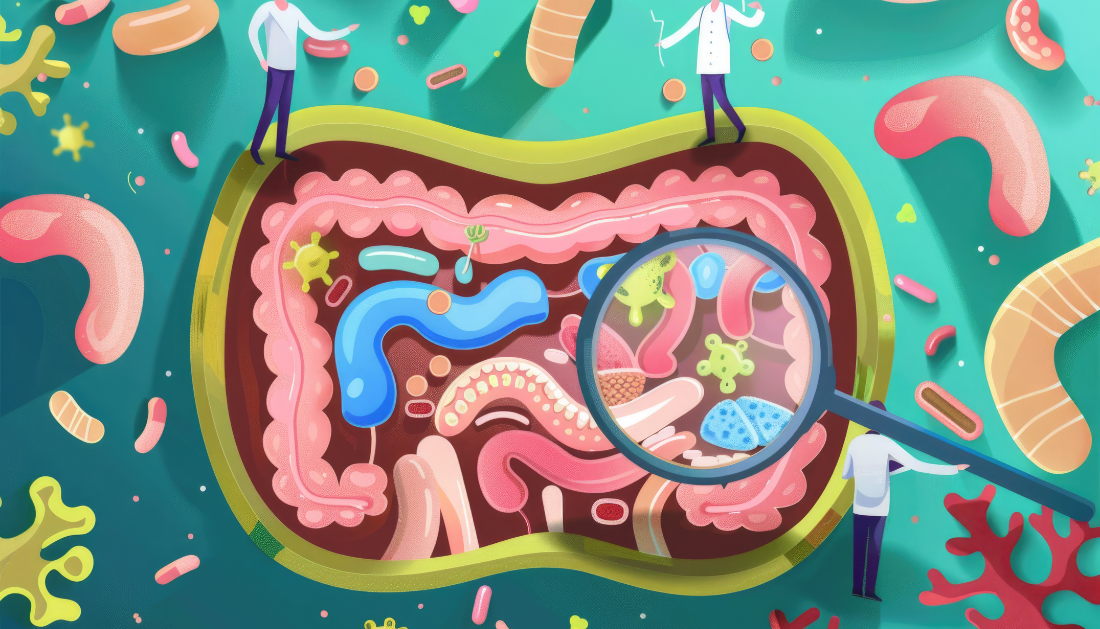

In a recent study published in Nature Mental Health, researchers identified brain-gut microbiome (BGM) patterns associated with stress resilience.
Background
Resilience refers to positive results in the face of difficult events or threats and includes change acceptance, persistence, negative affect tolerance, and the ability to recover from a traumatic incident.
Research has mostly focused on the relationships between resilience and personality traits, social factors, and behavioral/emotional control mechanisms.
The content and function of the human microbiome have been associated with stress-related illnesses. The gut microbiota influences psychological functioning via the BGM system and has been linked to stress resilience.
This shows that the microbiome may include metabolites with medicinal properties. However, no study has identified a comprehensive biochemical profile of resilience.
Gut Microbiome – Study
The current study looked at the link between resilience, clinical phenomes, brain features, and microbiome function. This was a secondary data analysis that combined findings from two previous research. Participants were recruited from a Los Angeles community.
Individuals were excluded if they had neurological disorders, underwent abdominal surgery, had psychiatric illnesses, used substances, used antibiotics or probiotics, or were pregnant or breastfeeding, among other things.
All participants received multimodal brain magnetic resonance imaging (MRI), submitted stool samples, and completed questionnaires.
Body mass index (BMI), physical activity, Connor-Davidson resilience scale (CD-RISC), socioeconomic status, state-trait anxiety inventory (STAI), perceived stress scale (PSS), hospital anxiety and depression scale (HADS), positive and negative affect schedule, diet, and patient-reported outcomes measurement information system (PROMIS) sleep scale were all included in the questionnaire.
Other assessments included a patient health questionnaire, coping strategies questionnaire, everyday discrimination score, behavioral inhibition/approach system, five facet mindfulness (FFM), multiple ability self-report questionnaire (MASQ), pain catastrophizing scale, early trauma inventory, visceral sensitivity index, pain vigilance and awareness questionnaire, international personality pool (IPIP), and normal personality assessment. DNA was taken from feces samples to sequence the 16S rRNA gene.
Furthermore, fecal samples were processed and ran through a worldwide HD4 metabolicomics platform. RNA extraction and meta-transcriptomic sequencing were completed.
The team used data integration analysis for biomarker development, employing the latent components (DIABLO) approach to clarify relationships between clinical/behavioral, central (brain), and peripheral (metabolome, microbiome) indicators linked with resilience traits.
Findings
The cohort totaled 116 people, with 71 of them being female. There were no significant differences in alpha and beta diversities between high- and low-resistance (HR/LR) groups.
DIABLO study found a highly linked omics signature that differentiated people with poor and high psychological resilience. DIABLO identified 45 variables (13 clinical, three metabolomes, five resting-state functional MRI, six structural MRI, two diffusion MRI, and 16 transcriptome variables).
The clinical variables were IPIP neuroticism and extraversion, HAD anxiety and depression, STAI anxiety, MASQ verbal memory, attention, visual perception, and language, PSS score, FFM total score, and non-judgment and descriptive sub-scores.
The HR group had higher mean levels of mindfulness and extraversion, but lower average levels of neuroticism, anxiety, concentration problems, verbal memory, language, visual perception, and felt stress than the LR group.
Creatine, dimethylglycine (DMG), and N-acetylglutamate (NAG) were among the metabolic variables examined. On average, the HR group had greater NAG and DMG levels than the LR group. Creatine levels were similar among groups.
In brief, the HR group had higher average levels of bacterial transcriptomes associated with genetic propagation, anti-inflammatory activity, metabolism, and environmental adaption.
The HR group had lower average levels of all structural MRI features and greater levels of all resting-state functional MRI features.
Among diffusion MRI findings, the HR group had less mean bilateral subcallosal gyrus connections, but more connections between the right hippocampus and (the right) lateral orbital gyrus. Two CD-RISC characteristics (persistence and control) were significantly associated with these DIABLO variables.
Conclusions
The study found that many BGM markers might distinguish HR people from LR subjects. The HR group demonstrated adaptive psychological characteristics, neuronal markers supporting cognitive-emotional links and emotion management, and microbiome activity that promotes gut health.
Notably, the two groups were the most clearly distinguished by bacterial transcriptomes. The findings imply that the gut microbiome and brain characteristics promote stress resilience.
For more information: An E, Delgadillo DR, Yang J, et al. (2024) Stress-resilience impacts psychological wellbeing as evidenced by brain–gut microbiome interactions. Nat Mental Health,. doi: 10.1038/s44220-024-00266-6.
more recommended stories
 Fat-Regulating Enzyme Offers New Target for Obesity
Fat-Regulating Enzyme Offers New Target for ObesityKey Highlights (Quick Summary) Researchers identified.
 Spatial Computing Explains How Brain Organizes Cognition
Spatial Computing Explains How Brain Organizes CognitionKey Takeaways (Quick Summary) MIT researchers.
 Gestational Diabetes Risk Identified by Blood Metabolites
Gestational Diabetes Risk Identified by Blood MetabolitesKey Takeaways (Quick Summary for Clinicians).
 Phage Therapy Study Reveals RNA-Based Infection Control
Phage Therapy Study Reveals RNA-Based Infection ControlKey Takeaways (Quick Summary) Researchers uncovered.
 Pelvic Floor Disorders: Treatable Yet Often Ignored
Pelvic Floor Disorders: Treatable Yet Often IgnoredKey Takeaways (Quick Summary) Pelvic floor.
 Urine-Based microRNA Aging Clock Predicts Biological Age
Urine-Based microRNA Aging Clock Predicts Biological AgeKey Takeaways (Quick Summary) Researchers developed.
 Circadian Control of Neutrophils in Myocardial Infarction
Circadian Control of Neutrophils in Myocardial InfarctionKey Takeaways for HCPs Neutrophil activity.
 E-Cigarette Use and Heart Attack Risk in Former Smokers
E-Cigarette Use and Heart Attack Risk in Former SmokersKey Takeaways for Clinicians and Nurses.
 Ultramarathon Physiology: What HCPs Should Know?
Ultramarathon Physiology: What HCPs Should Know?Ultramarathon Metabolism: What Happens to the.
 High-Intensity Training and Oxidative Stress Insights
High-Intensity Training and Oxidative Stress InsightsNew Evidence Linking High-Intensity Training and.

Leave a Comment